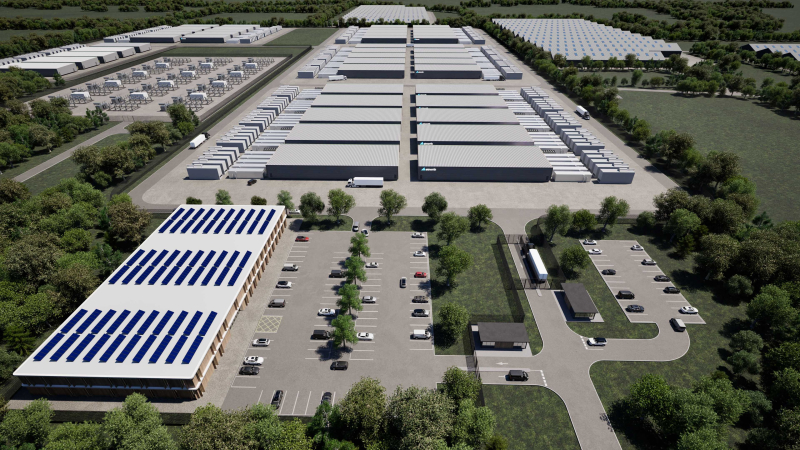Icelandic data center operator atNorth has announced that its next data center, the company’s largest to date, will use excess heat to create large greenhouses and heat homes. According to The Register, the new DEN02 campus will be located near the Danish Billund Airport.
The campus is designed to perform intensive computing for clients such as hyperscalers and companies running AI and HPC workloads. At the time of opening in 2026, the campus capacity should be 250 MW, and in the future it can be scaled further. Like other data center operators, atNorth is seeking renewable energy to power its facilities. In the case of DEN02, we are likely to be talking about solar and wind power plants in the vicinity of the site.

Image source: atNorth
Like many modern sustainable data center projects, the new atNorth initiative will take into account the possibility of using waste heat, especially since the average annual temperature in Denmark is around 8˚C. The plan will be implemented with the assistance of Wa3rm, a company specializing in “circular industrial projects”, and the heat from DEN02 will be used to grow vegetables.
There are also plans to provide heating and hot water to local residents, but atNorth told reporters it was only in talks with potential clients. The company noted that DEN02 could become the standard for future data centers. The company’s high energy efficiency and use of heat capture technologies, coupled with its favorable geographic location in Denmark and the company’s commitment to sustainability, are expected to set an example for the entire data center industry. Denmark could be an ideal destination for hyperscalers and AI businesses looking to decarbonize their projects.
Data center heat utilization schemes have become quite common in recent years, especially in Europe, where the European Energy Efficiency Directive (EED) requires data center operators to use industry best technologies to achieve energy efficiency. However, TechUK earlier this year warned of potential drawbacks to the practice of using data center heat in district heating systems due to the relatively low temperatures of the coolant and the lack of accurate data on exactly how much heat will be generated at all.
Other studies also show that the use of heat is not always justified. But all this did not prevent the implementation of projects like the Groningen one in the Netherlands, as well as individual projects of Google, Microsoft and Yandex in Finland. The most unusual, perhaps, is a project in Japan (Hokkaido), where snow is used to cool IT infrastructure, and the resulting warm water is used to breed eels for sale.